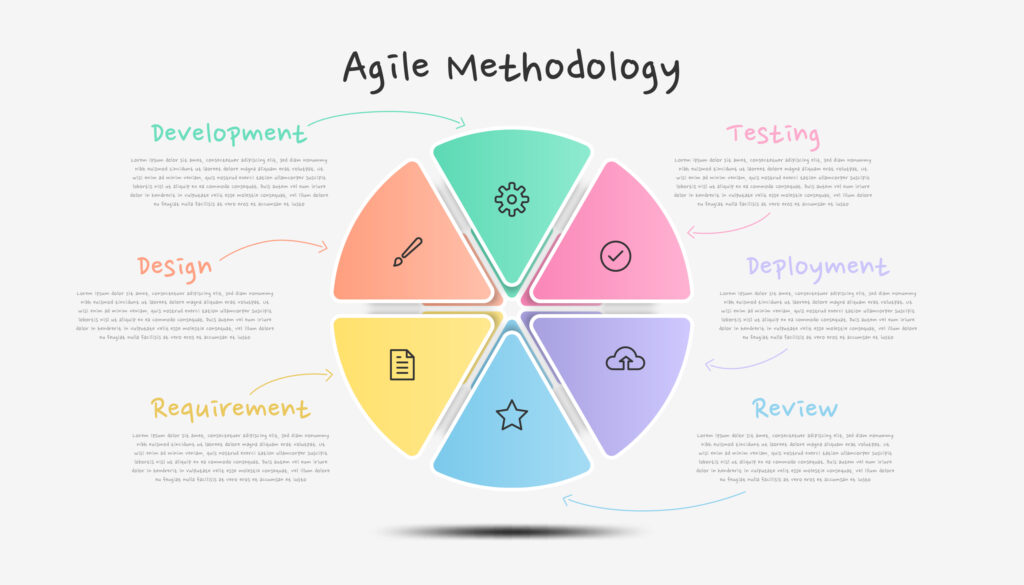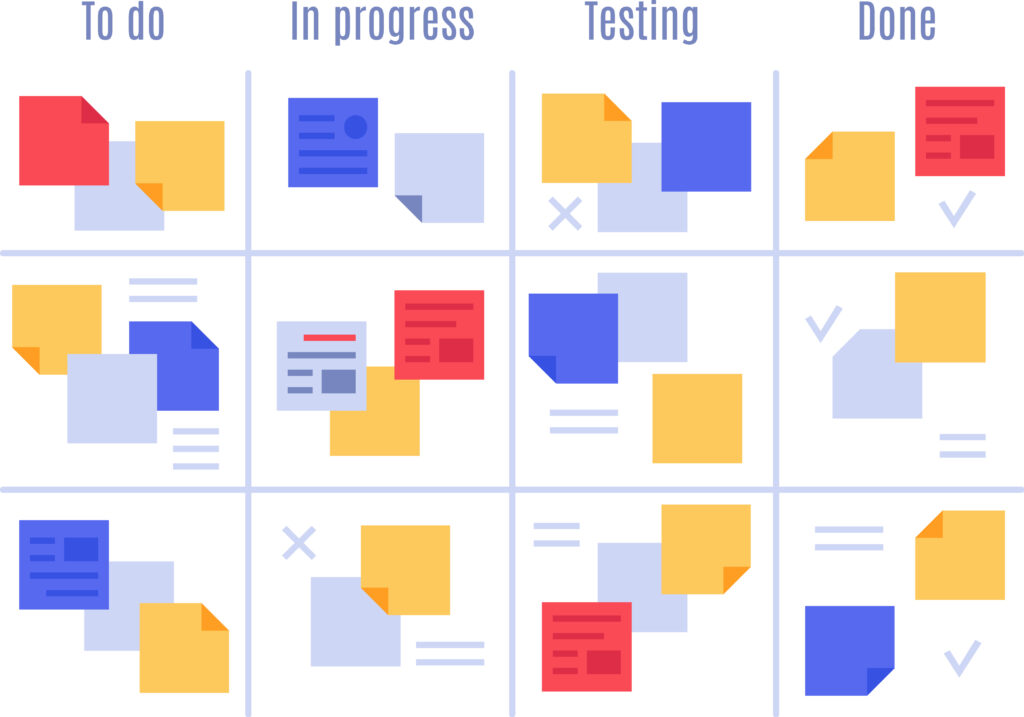
12th June 2023
Driving Business Growth through Agile Development: A Comprehensive Exploration
In the bustling and swiftly evolving world of digital business, maintaining a competitive edge requires rapid adaptation and innovation. Among the myriad of strategies employed to uphold this competitive advantage, one stands out for its effectiveness and efficiency – Agile Development. At Gemstone, we champion Agile Development with enthusiasm and conviction, having witnessed its transformative effects on business expansion. In this blog post, we aim to delve into how Agile Development serves as a propellant for business growth. Our discussion draws from the wide-ranging and multifaceted experience we have gathered in the challenging and exciting digital sector.

Understanding Agile Development: A Closer Look
Before we delve into the benefits and implementations of Agile Development, it’s important to first understand what it really entails. Agile Development is a flexible approach to project management and product development that emerged from the field of software development. It encourages active collaboration with customers and places a high premium on the ability to respond swiftly to changes.
At its core, Agile Development centres around short, iterative cycles known as “sprints.” This approach allows teams to work on manageable sections of a project at a time, focusing on continuous improvement. Perhaps one of the most defining characteristics of Agile Development is the deep involvement of the customer throughout the process, ensuring that their needs and feedback directly shape the end product.
Agile Development as a Growth Engine: Four Key Benefits
- Fast-Tracked Time to Market
One of the most powerful advantages that Agile Development brings to the table is its ability to fast-track product delivery. Traditional development methodologies often require complete product development before testing and delivery. However, Agile Development, with its focus on iterative sprints, enables development teams to break down the project into small, manageable units. This approach facilitates rapid prototyping and testing, allowing for swift adjustments and improvements. Consequently, this drastically reduces the time it takes to get a product to market, giving businesses a critical speed advantage in the competitive digital landscape.
- Elevated Levels of Customer Satisfaction
The Agile framework is not merely open to customer feedback – it actively encourages and seeks it at every stage of the process. Unlike traditional methodologies where customer feedback might only come into play at the very end, Agile Development keeps the customer involved throughout. This consistent interaction ensures that the product stays in line with the evolving customer needs, leading to higher levels of satisfaction. Additionally, customers who see tangible progress and product iterations in real-time are likely to have more confidence in the team’s capabilities, further strengthening customer relationships.
- Superior Product Quality
Another significant benefit of Agile Development lies in its contribution to improving product quality. Given the regular testing throughout the development process, errors, inconsistencies, or mismatches with customer expectations can be detected early on. The incremental approach allows teams to make improvements and refinements continually, leading to a superior end product. This commitment to quality significantly enhances a company’s reputation, encourages customer loyalty, and builds long-term relationships.
- Increased Team Productivity and Morale
Agile Development is not just about processes and products, but also about the people who make it happen – the team. This methodology fosters a collaborative and efficient work environment that drives team productivity. It emphasises clear communication, transparency, and interaction over comprehensive documentation. This approach motivates team members, providing them with a clear understanding of their roles, responsibilities, and the project’s progression. Shared responsibility within Agile teams cultivates a sense of ownership and accountability, which further boosts team morale and efficiency.

Implementing Agile Development at Gemstone: Our Approach
At Gemstone, Agile Development is more than just a buzzword. It’s a practice that is deeply embedded into our fundamental business strategies. Depending on the specific requirements of a project, our Agile approach incorporates a variety of Agile methodologies, such as Scrum, Kanban, Lean, and XP (Extreme Programming).
Our Agile teams are composed of cross-functional members who actively collaborate, continually learn, and adapt to changes. This active collaboration allows for the quick resolution of challenges and steady progress. We utilise advanced tools and systems for managing Agile projects, which facilitate seamless communication, enhance visibility, and maintain complete transparency with our clients, ensuring they are involved and informed at every stage.
Furthermore, our adoption of Agile principles extends far beyond software development. We believe that Agile is not just a development methodology, but a mindset that can bring significant benefits to all areas of business. Therefore, we also apply Agile principles to other functional areas, such as marketing and human resources. This broad implementation encourages flexibility, efficiency, and customer-centricity across the entire organisation, fostering a truly Agile corporate culture.
This broad application of Agile principles has yielded considerable benefits, driving our growth and enhancing our performance in various dimensions. It has allowed us to deliver top-notch digital solutions faster and more efficiently, effectively responding to our clients’ needs, and solidifying our standing as a leader in the digital development sector.
Navigating Challenges in Agile Implementation
Like any change in approach or methodology, Agile Development implementation comes with its share of challenges. There can be resistance to change, especially from those accustomed to traditional methodologies. A lack of Agile expertise or training can also pose a challenge, as can difficulty in transitioning from traditional “waterfall” models to an Agile approach.
At Gemstone, we believe in facing these challenges head-on. We invest heavily in training our teams in Agile methodologies, and fostering an Agile mindset across the organisation. We also encourage open communication to address concerns or resistance, emphasising the long-term benefits of Agile. This involves regularly showcasing successful Agile projects, and sharing how Agile has allowed us to enhance productivity, improve product quality, and boost customer satisfaction.
To make the transition smoother for our clients, we ensure complete transparency about the Agile process. We explain the benefits they can expect, clarify how they’ll be involved, and demonstrate how we’ll address potential challenges. This open communication fosters trust and ensures that our clients are comfortable and informed every step of the way.

Final Thoughts: Agile Development as a Key to Success
In conclusion, Agile Development has emerged as a potent force in today’s digital development landscape. It is more than just a project management methodology – it’s a philosophy that places collaboration, flexibility, and customer satisfaction at its heart. By focusing on these aspects, Agile drives growth and helps businesses stay competitive in the ever-changing digital world.
As we at Gemstone continue to embed Agile principles into our work, we look forward to driving further innovation and success, not just for ourselves, but also for our clients. We believe that in the fast-paced digital world, staying still is not an option. And with Agile Development, we ensure we’re moving – quickly, efficiently, and in sync with our customers’ needs.


